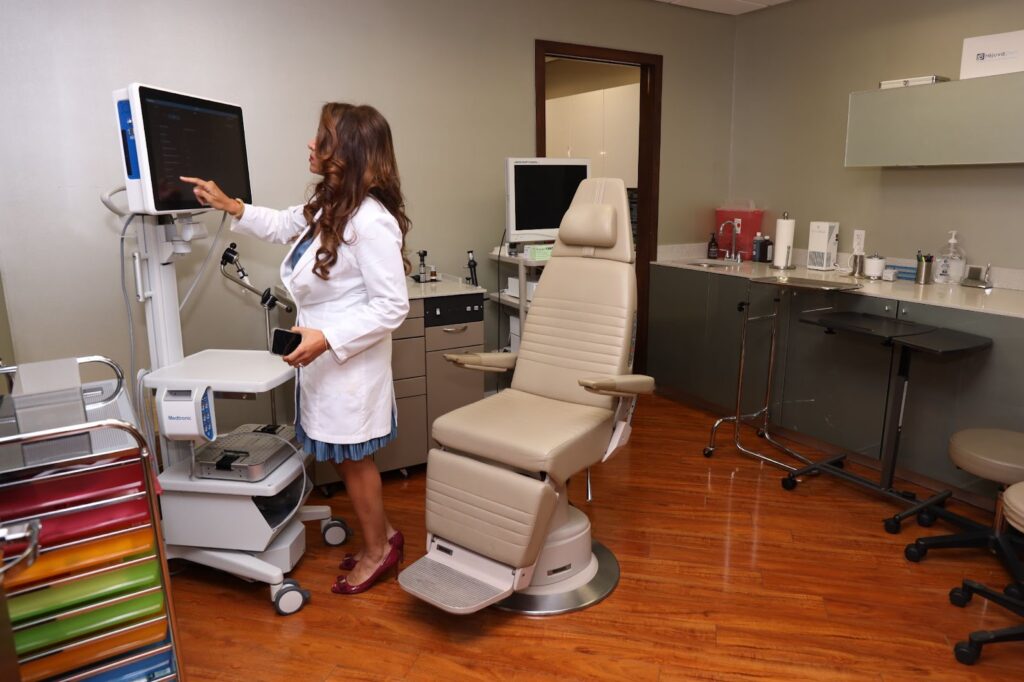Facial expressions are a universal language that helps us convey emotions and reactions without words. However, for individuals suffering from facial paralysis, this language becomes disrupted, leading to both functional and emotional challenges. How can plastic surgery help with facial paralysis? Keep reading to learn more about the steps Dr. Tadroscan take to improve this condition and help you feel more confident.
Understanding Facial Paralysis
Facial paralysis is a medical condition characterized by the loss of muscle control in the face. This paralysis results from damage or injury to one of the facial nerves, leading to significant facial distortion that can be both physically and emotionally challenging for the affected individual.
How Paralysis Occurs
At the core of our facial expressions lies the facial nerve, a complex structure resembling a telephone cable, housing thousands of individual nerve fibers. Each of these fibers plays a pivotal role: by transmitting electrical impulses to specific facial muscles, they allow us to express a wide range of emotions, from joy and surprise to sadness and contemplation. It’s often referred to as “the nerve of facial expression” for this very reason.
However, when damage occurs to this nerve, the consequences can be profound. Facial weakness or even complete paralysis can happen. In some cases, the nerve fibers may become irritated, leading to spasms or twitching in the facial muscles.
Beyond muscle control, the facial nerve also influences tear and saliva glands, taste from the front of the tongue, and even the stirrup bone in our middle ear. Damage to this nerve can, therefore, manifest in various symptoms, from dryness of the eye or mouth to disturbances in taste.
Causes
Facial paralysis can stem from various sources, but some of the primary causes include:
- Bell’s Palsy: This condition remains somewhat ambiguous, but many medical experts theorize that it arises from the body’s immune response to certain viral infections, leading to inflammation of the facial nerve.
- Physical Trauma:Accidents or injuries that directly impact the facial region can cause damage to the facial nerve. This damage can range from mild impairment to complete paralysis, depending on the severity of the trauma.
- Infections: Both bacterial and viral infections, such as herpes simplex or Lyme disease, can adversely affect the facial nerve or the tissues surrounding it, leading to paralysis symptoms.
- Tumors:Growths, whether benign or malignant, located near the facial nerve can exert pressure on it. This pressure can interfere with the nerve’s function, leading to varying degrees of paralysis.
- Underlying Medical Conditions: Certain conditions, like diabetes, increase the susceptibility to nerve disorders, including those of the facial nerve. Lyme disease, for instance, can directly impact the nerve, causing paralysis symptoms.
Identifying the root cause is essential as it determines the most effective treatment approach and offers a clearer understanding of the prognosis.

How Plastic Surgery Can Help
The realm of plastic surgery has evolved significantly over the years, and Dr. Tadros can now offer innovative solutions to a wide range of medical conditions, including facial paralysis. For those grappling with this condition, plastic surgery can be a beacon of hope, providing both functional and aesthetic remedies.
Targeting the Root Cause
One of the primary objectives of plastic surgery for treating facial paralysis is to address the underlying cause. For instance, if a tumor is exerting pressure on the facial nerve, surgical intervention can remove or reduce the tumor, alleviating the paralysis.
Reanimation Procedures
These surgeries aim to restore movement and symmetry to the face. Techniques might involve muscle transfers, where muscles from other parts of the body are relocated to the face, or nerve grafts, where healthy nerves are transplanted to replace or support damaged ones.
Eyelid Weights
A common complication of facial paralysis is the inability to close the eye properly. Gold or platinum eyelid weights can be surgically implanted to aid in eyelid closure, protecting the eye from dryness and potential injury.
Static Slings
These are procedures where tissues or synthetic materials are used to suspend and support sagging facial features, providing a more symmetrical appearance.
BOTOX® Injections
While not a permanent solution, BOTOX® can be used to balance the face by relaxing hyperactive muscles on the unaffected side, creating a more symmetrical look and reducing unwanted spasms.
Facial Fillers
These can be employed to restore volume and contour to areas of the face affected by muscle atrophy or loss of fat due to paralysis.
The transformative power of plastic surgery in the context of facial paralysis is undeniable. Not only does it offer physical improvements, but it also plays a pivotal role in boosting the self-esteem and emotional well-being of patients. With the right surgical approach tailored to each individual’s unique needs, patients can reclaim their expressions and confidence.

Find Relief at the Center for Sinus, Sleep & Facial Plastic Surgery
In the modern era, medical advancements have opened new horizons for patients, and facial plastic surgery is no different. Dr. Tadros’s expertise and innovative procedures ensure that individuals no longer have to live with the debilitating effects of facial paralysis. Instead, they can look forward to a future where they can express themselves freely, confidently, and without restraint.
If you or a loved one are navigating the challenges of facial paralysis, remember that there’s hope. Contact our New York or New Jersey office to get started with treatment today.

